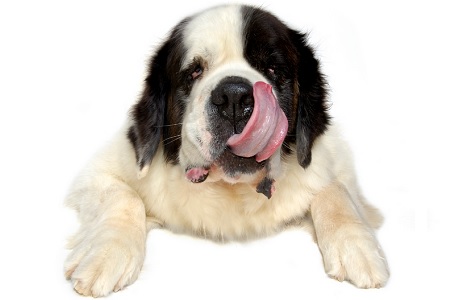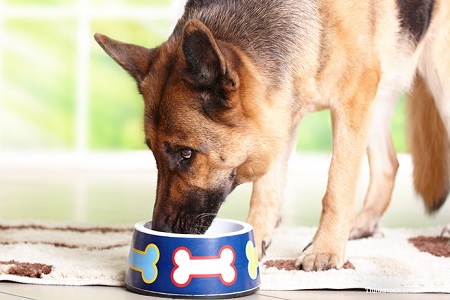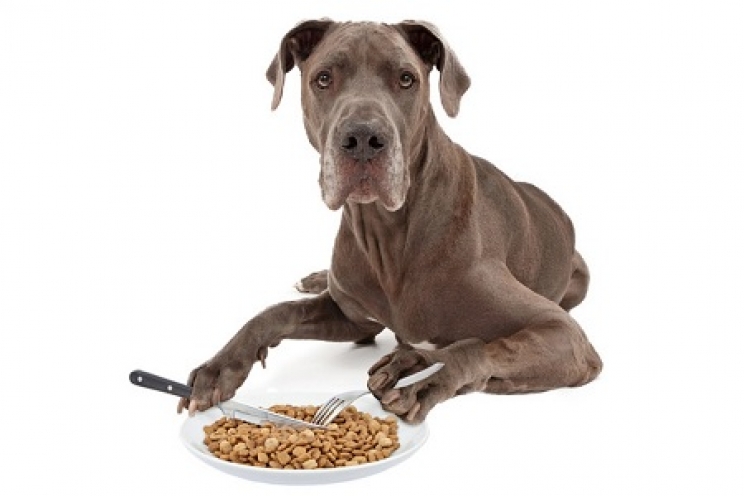When we talk about dog nutrition, we often do not take into account the fact that there is a large variety of sizes, from the Chihuahua toy to the majestic Great Dane. The great physicality influences the food needs of the animal, so much that most companies specializing in the sector have developed specific feeds for dogs of all sizes. In this article, we are going to see the correct diet for large and giant breed dogs.
What are the dietary needs of large and giant dogs?
Before we start, let's understand what are the sizes of dogs based on weight:
- Toy breeds: these are the classic "handbag" dogs, weighing no more than 4 kg;
- Small or mini size: dogs of “contained” size, between 4 and 10 kg in weight (Pekingese, Shih Tzu, Yorkshire Terrier, Pug, French Bulldog and many others);
- Medium size: dogs with an intermediate size, weighing 11-25 kg (Beagle, Cocker Spaniel, Bulldog, Chow Chow, Shar Pei, Schnauzer and most hounds);
- Large size: between 26 and 44 kg in weight (Boxer, Dobermann, Labrador, German Shepherd, Basset Hound, Golden Retriever, Dalmatian, for example);
- Giant size: really very large dogs, with a weight exceeding 44 kg (Great Dane, Cane Corso, Bernese Mountain Dog, Neapolitan Mastiff).
As we saw in the article dedicated to the diet for small and toy dogs, there are precise differences in the shape and functioning of the organism of these "mini" animals. In the same way, there are some very important factors for large and giant dogs, at the basis of specific diets.
As often happens to us, the bones and joints of the limbs support a weight that in some cases exceeds the ideal one. In the long run, this can create serious problems, weakening the skeletal system. If we consider that giant dogs even exceed 45 kg, we will easily understand how important it is that bones and joints must be healthy in order to support the weight of the whole body.
When do the problems start appearing?

First of all, when they exceed the ideal weight the legs are no longer able to work well, experiencing a strong weakening, which progressively leads to the appearance of osteoarticular disorders, first of all the hip dysplasia.
Another important factor, which often is not taken into consideration by the owners, concerns the growth rate of the puppies. These dog breeds grow with impressive speed, quickly multiplying their size. Some studies have even shown that whilst a small breed dogs growth begins to slow down once it reaches 4 months of age, larger dogs can continue to "rise" even beyond 9 months of age. In particular, the long bones of the legs are those that stop stretching not before the dog is at least one year old.
In fact, for these dogs, the growth period - equivalent to our puberty - can even end up to 24 months of age, compared to 10-12 months for smaller dogs.
If the puppy's diet intake is too high, it only accelerates and intensifies the exuberant growth process even more.
The ideal diet
The home diet for large and giant dogs must take into account all the factors we have just mentioned.
In particular, as regards to the rate of growth in the first months of life, it is very important to provide the animal with a controlled calorie intake. This means that by supercharging the puppy within the first year of life, we would meet both an overweight problem and disproportionate growth.
Therefore, the food must not simply be "light", with low fat, but must also be able to provide quality and highly digestible proteins.
In addition, one must also think about the health of bones and joints. Most of the specific foods on the market have a balanced integration of calcium, phosphorus, copper and zinc, all essential minerals for the skeletal system. However, contrary to popular belief, excess calcium in the diet can create serious problems, especially in dogs of this size. Reading the food labels, we should look for a percentage that does not exceed 1.2%. Furthermore, it is essential that calcium is present in equilibrium with phosphorus, in a ratio of about 1: 1. An integration with glucosamine and codroitin sulfate can be an excellent solution to support the joints.










